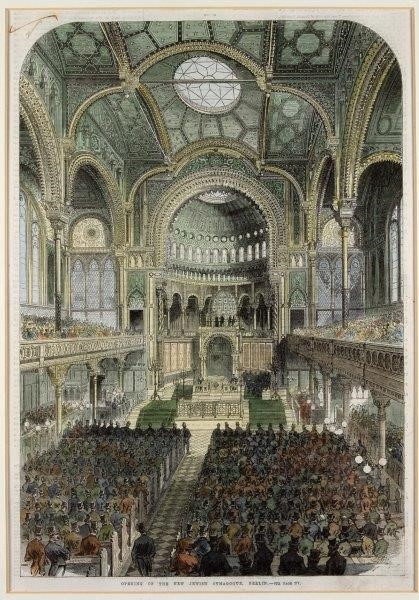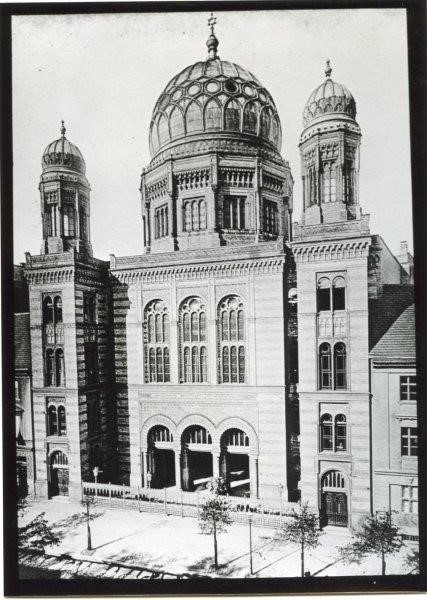At its inauguration in 1866, the New Synagogue Berlin was described by the non-Jewish press as “the pride of Berlin’s Jewish community, and even more than this, […] an adornment of the city.” With its almost fairy-tale-like, exotic-looking forms and ornaments, the new magnificent building not only exuded elegance and beauty; with its use of the most expensive materials, it also reflected the socio-economic advancement and, with its size, the steadily growing community in Berlin. More than anything else, the building stood for the growing self-confidence of the Jewish community: The entrance with its large portals was placed on the street and not set back; above this and not above the main synagogue room towards the back, the silhouette was topped by the golden main dome, which was visible from afar. From a Jewish point of view, the recourse to orientalizing and Moorish architecture reflected more than a mere fascination with the Orient and the Alhambra: It also referred, on the one hand, to the Spanish Middle Ages, which was anchored in collective memory as the “Golden Age,” as a model for the coexistence of Christians, Muslims, and Jews; on the other hand, it also pointed to the association with the geographical-cultural origin of Judaism, which can be interpreted as a statement translated into architectural terms by a self-confident Judaism, which relied on its sovereignty. This architecture was the manifestation of the struggle for social equality and a dialog (almost) at eye level.


Timeline Berlin
- ↑ Louis Lewandowski – 1876
